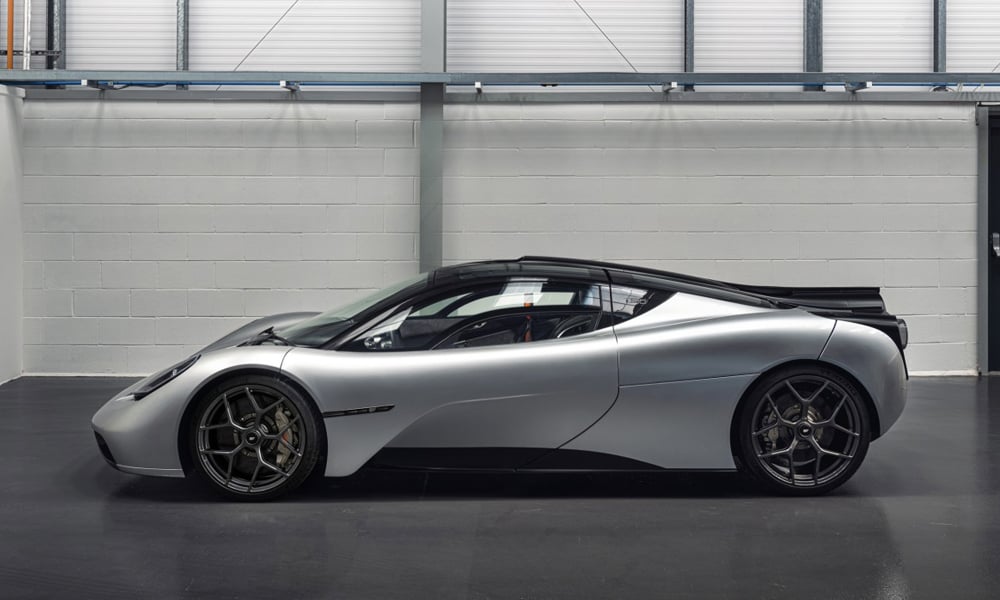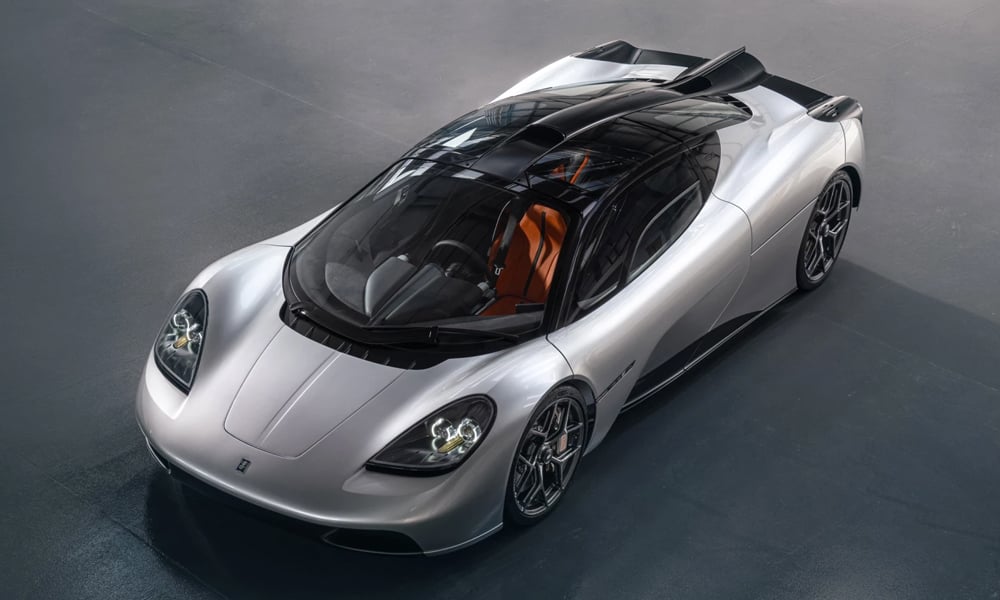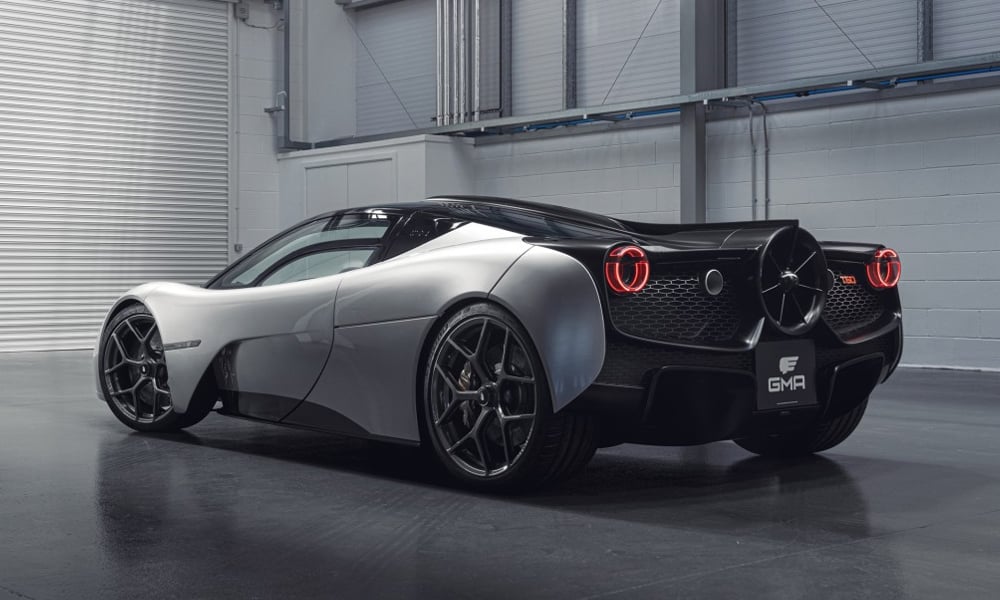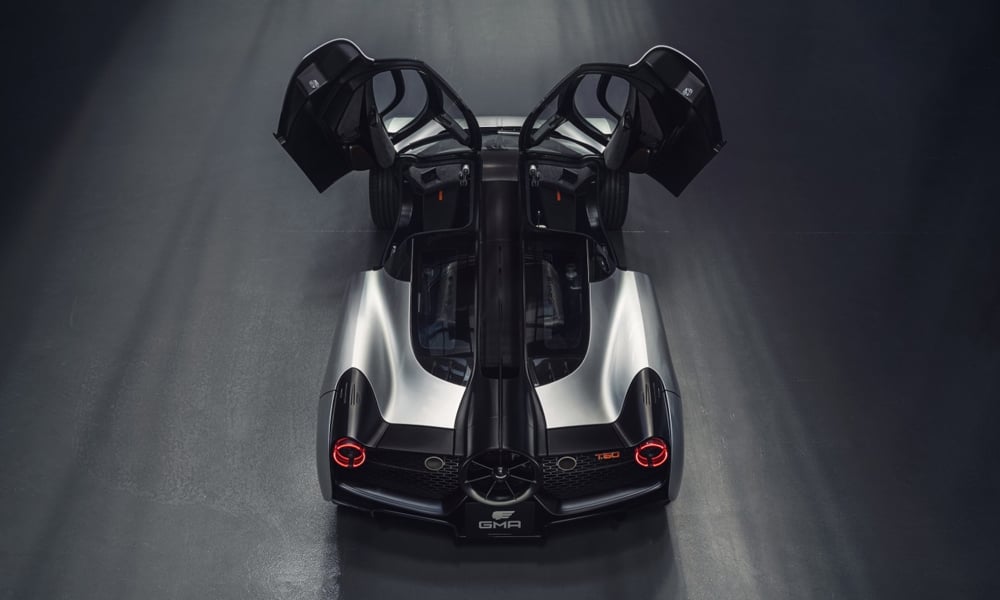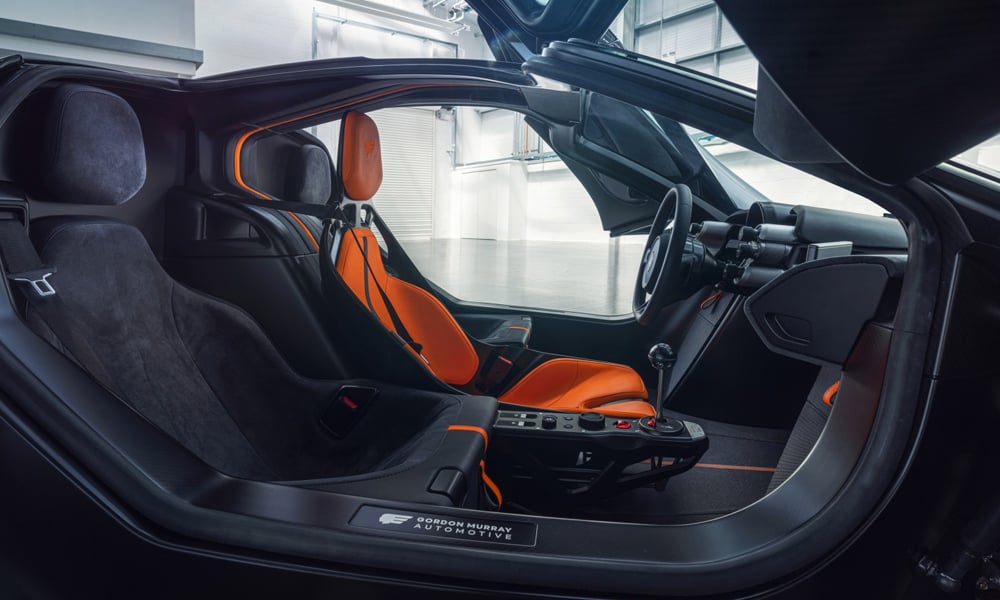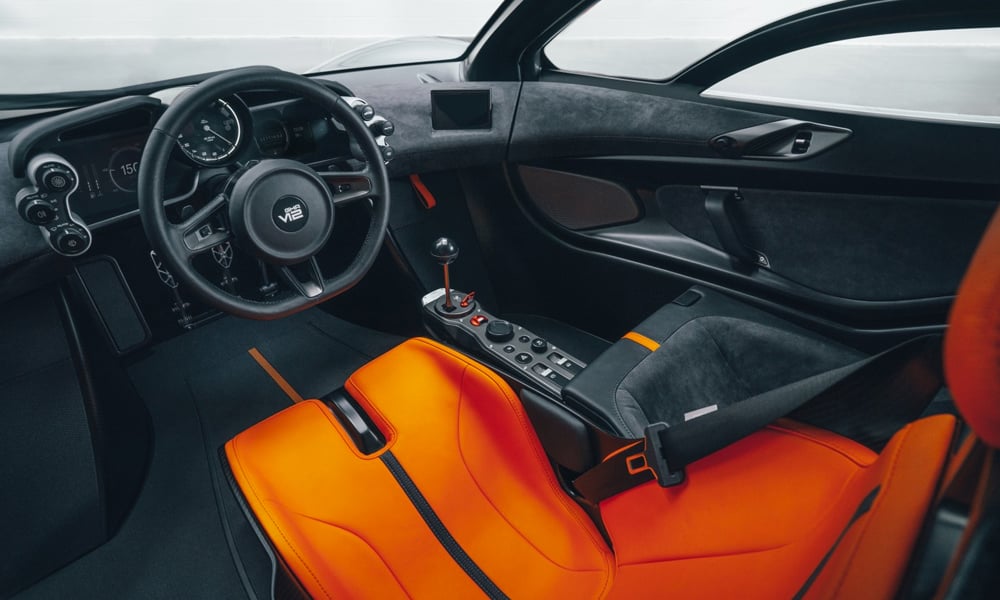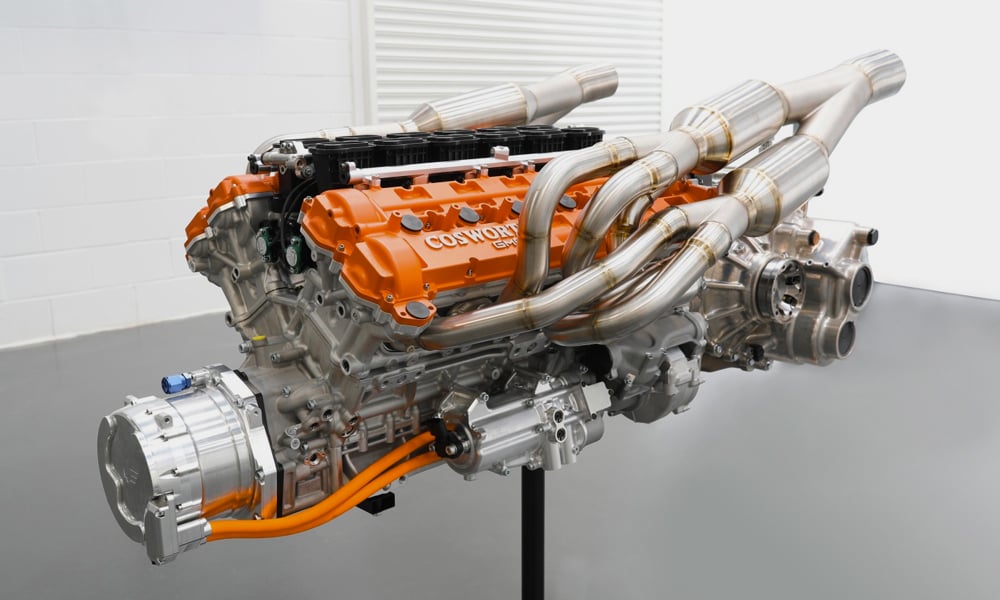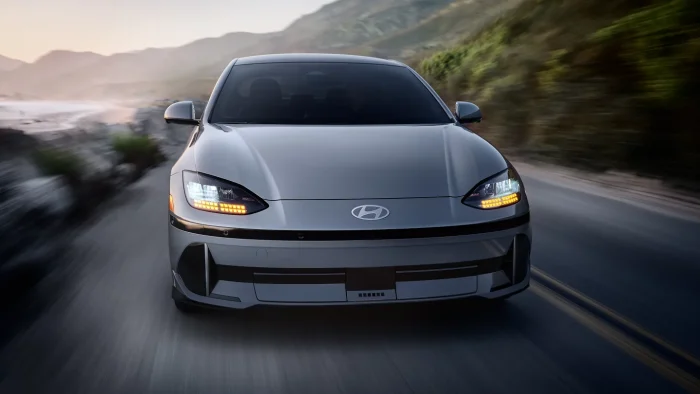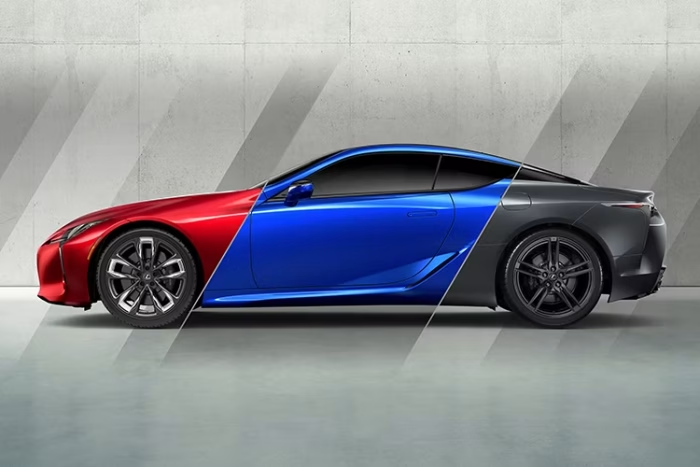The McLaren F1 might just be the best supercar ever made, and it was last built 22 years ago. Conquering the likes of the Ferrari F40, Porsche 959, and the Lambo Countach, the F1’s staggering performance numbers are still impressive today. Now, its creator Gordon Murray has followed it up with what’s purported to be the world’s greatest analog car ever made and should eclipse the F1 in terms of capability and greatness. Although it’s not made by McLaren (but instead Murray’s company with his namesake), it has his F1 genius written all over it. It sports a similar shape with its low nose and sleek sloping greenhouse, as well as the iconic F1 butterfly doors that deploy upward and outward.
Power comes from a naturally-aspirated Cosworth V12 that churns out 654 horsepower. While that’s not a huge number, the mere fact that the T.50 weighs in at a mere 2,174 pounds, which is lighter than a Mazda MX-5 Miata, making the T.50’s power-to-weight ratio staggering. It also boasts tremendous aero and downforce components, not the least of which is a rear turbine fan that combines with other aero elements to increase downforce and aid with airflow. Inside, you’ll find the same seating configuration as the F1 with a center driver’s seat, flanked by two small passenger seats (barf bags not included). The floor-mounted three-pedal setup means it’s manual transmission only (no paddle shifters), and the long gearshift is a thing of true beauty. The rest is as high tech as it gets with a huge glass instrument panel, side view cameras/monitors instead of mirrors, and full carbon fiber seats for all occupants. Only 100 T.50s will be made at a price of just over three million dollars.

